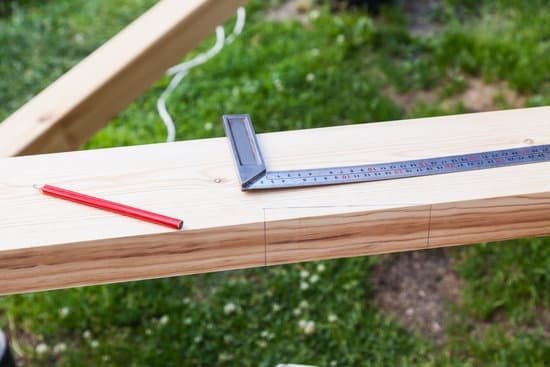Woodworking projects require careful planning and precise execution to ensure successful outcomes. One crucial aspect of these projects is the woodworking contract, which lays out the terms and conditions agreed upon by the parties involved. A woodworking contract serves as a legal document that provides clarity on project expectations, responsibilities, and payment terms. To simplify this process, many woodworkers opt to use a woodworking contract template.
Using a woodworking contract template can streamline the contract drafting process and ensure that all essential components are included. These templates are designed to cover important aspects such as project scope, timeline, deliverables, payment terms, and dispute resolution mechanisms. By utilizing a woodworking contract template, woodworkers can save time and effort while also reducing the risk of misunderstandings or disputes during the project.
In addition to saving time and effort, using a woodworking contract template offers several benefits for woodworkers. These templates provide a standard framework for outlining project details and expectations, ensuring that both parties are on the same page from the start.
Furthermore, having a written agreement in place can protect both parties in case of any disagreements or issues that may arise during the project. Overall, incorporating a woodworking contract template into your project workflow can help mitigate risks and foster clear communication between all stakeholders involved.
Key Components of a Woodworking Contract
A woodworking contract is a crucial document that outlines the terms and conditions of a woodworking project between parties involved. This legally binding agreement helps to ensure that both the contractor and the client are on the same page regarding the project scope, timeline, and payment terms.
Incorporating specific details in a woodworking contract is essential to avoid misunderstandings or disputes that may arise during the course of the project. By using a woodworking contract template, you can streamline the process of creating a comprehensive agreement that covers all necessary components.
When drafting a woodworking contract, it is important to include key components that clearly define the expectations and responsibilities of each party involved. Here are some essential elements that should be included in a woodworking contract:
- Project scope: Clearly outline the specific tasks and deliverables expected from both parties.
- Timeline: Establish deadlines for different stages of the project to ensure timely completion.
- Payment terms: Detail the payment schedule, including deposit requirements, milestones payments, and final payment terms.
- Material specifications: Specify the type of materials to be used in the project, including quality standards.
- Change orders: Include provisions for any modifications or changes to the original scope of work.
By utilizing a woodworking contract template, you can easily customize these components based on your project requirements. These templates provide a structured format for organizing all relevant information in one document, making it easier for both parties to refer back to if any issues arise during the project. Additionally, using a standardized template ensures consistency in contracts across different projects, helping to maintain professionalism and clarity in your agreements.
How to Use a Woodworking Contract Template
When embarking on a woodworking project, using a woodworking contract template can be incredibly beneficial in ensuring that all parties involved are on the same page and that the project runs smoothly from start to finish. By utilizing a pre-made template, woodworkers can save time and effort in drafting a contract from scratch, while also ensuring that all necessary information is included.
Below is a step-by-step guide on how to effectively use a woodworking contract template for your next project.
Finding the Right Template Online
The first step in using a woodworking contract template is to find the right one online. There are numerous websites and platforms that offer free or paid templates specifically designed for woodworking projects. It is essential to choose a template that aligns with the scope and scale of your project, as well as one that includes all the necessary components required for a comprehensive contract.
Downloading and Customizing the Template
Once you have found the perfect woodworking contract template, download it to your computer or device. It is crucial to carefully review each section of the template and ensure that it includes details such as project scope, timeline, payment terms, materials list, and any other specific requirements for your project.
Take the time to customize the template by inserting relevant information about the project, including names of parties involved, dates, project specifications, and any additional clauses or terms that need to be included.
Finalizing and Reviewing the Contract
After customizing the woodworking contract template to suit your specific project needs, take the time to review the document thoroughly. Ensure that all details are accurate and clearly outlined, leaving no room for ambiguity or misunderstanding. Once you are satisfied with the content of the contract, both parties should carefully read through it together to confirm their agreement before signing.
Remember that a well-drafted woodworking contract can help prevent disputes and issues later on in the project timeline. Utilizing a woodworking contract template can streamline this process and provide peace of mind for all involved parties.
Common Mistakes to Avoid in Woodworking Contracts
When it comes to woodworking projects, having a well-drafted contract is crucial to ensure that all parties involved are on the same page. However, there are common mistakes that can lead to disputes or legal issues down the road. By being aware of these pitfalls and taking steps to avoid them, you can protect yourself and your project. Here are some common mistakes to avoid in woodworking contracts:
- Vague or Ambiguous Language: One of the most common errors in woodworking contracts is using vague or ambiguous language that can lead to misunderstandings. It’s important to be clear and specific about the scope of the project, timeline, deliverables, and payment terms.
- Failure to Include Change Order Procedures: Changes are inevitable in any project, but failing to include procedures for change orders in the contract can result in confusion and disputes over additional costs or modifications to the original agreement.
- Lack of Dispute Resolution Mechanisms: Without clear mechanisms for resolving disputes built into the contract, disagreements can escalate quickly and lead to costly legal battles. Including provisions for mediation, arbitration, or other methods of dispute resolution can help prevent conflicts from spiraling out of control.
Avoiding these common mistakes in woodworking contracts can help ensure a smooth and successful project completion. By using a woodworking contract template as a starting point and customizing it to fit your specific needs, you can protect yourself and your interests throughout the duration of the project. Remember that clarity, specificity, and attention to detail are key when drafting a woodworking contract to avoid potential pitfalls later on.
Sample Woodworking Contract Template
When embarking on a woodworking project, having a solid contract in place is crucial to ensure that all parties involved are on the same page and understand their roles and responsibilities. A woodworking contract outlines the terms and conditions of the project, including details such as the scope of work, timeline, payment terms, and other important considerations. By using a woodworking contract template, woodworkers can streamline the process of creating a legally binding agreement that protects their interests.
Benefits of Using a Woodworking Contract Template
One of the primary benefits of using a woodworking contract template is the time-saving aspect. Instead of starting from scratch and potentially missing crucial details, a template provides a framework with all the essential components already included. This not only saves time but also helps ensure that no important details are overlooked. Additionally, using a template can help woodworkers avoid unnecessary disputes or miscommunication by clearly outlining expectations for both parties involved in the project.
Customizing Your Woodworking Contract Template
While using a woodworking contract template can expedite the process of creating an agreement, it’s essential to customize it to suit the specific needs of your project. Each woodworking project is unique, and therefore, it’s important to tailor the contract to reflect the specific scope of work, timeline, payment structure, and any other relevant details.
By customizing the template to fit your project requirements, you can create a comprehensive agreement that reduces the risk of misunderstandings or disputes down the line.
Legal Considerations in Woodworking Contracts
When entering into a woodworking project, whether as a contractor or a client, it is crucial to understand the legal considerations involved in woodworking contracts. These contracts serve as the foundation for the project, outlining the responsibilities of each party and setting expectations for the work to be completed.
One key consideration is the inclusion of specific details such as project scope, timeline, payment terms, and dispute resolution mechanisms. By clearly defining these aspects in the contract, both parties can minimize misunderstandings and potential disputes down the line.
Consulting with a lawyer before signing any woodworking contract is highly recommended to ensure that your rights and interests are protected. A legal professional can review the terms of the contract, explain any legal jargon or complex clauses, and offer guidance on potential risks or liabilities. Additionally, they can help you customize a woodworking contract template to suit your specific needs and ensure that it complies with relevant laws and regulations.
Another important legal consideration in woodworking contracts is compliance with local building codes, zoning laws, and permit requirements. Failing to adhere to these regulations can result in fines, delays in project completion, or even legal action.
It is essential to include provisions in the contract that address these considerations and outline who will be responsible for obtaining necessary permits and approvals. By proactively addressing these legal issues in the contract, you can protect yourself from costly penalties and ensure that your woodworking project proceeds smoothly.
| Woodworking | Legal Considerations |
|---|---|
| Contract details | Risks Mitigation |
| Scope definition | Compliance assurance |
| Zoning laws adherence | Permit responsibility assignment |
Case Studies
Woodworking contracts play a critical role in ensuring the smooth execution of woodworking projects. Without a well-drafted contract, disputes and misunderstandings can arise, leading to project delays and financial losses.
One key benefit of using a woodworking contract template is that it provides a standardized framework for outlining the terms and conditions of the project, ultimately protecting both parties involved. By clearly defining expectations, responsibilities, timelines, and payment terms, a woodworking contract helps maintain transparency and accountability throughout the project.
A woodworking contract template typically includes sections such as project scope, materials used, timeline for completion, payment schedule, warranties, dispute resolution mechanisms, and more. These details are crucial for setting clear expectations between the client and the woodworker.
Additionally, by specifying these elements upfront in a contract template, both parties can refer back to the document in case of any disagreements or discrepancies during the course of the project. This proactive approach can help prevent potential conflicts and ensure that the project progresses smoothly from start to finish.
Investing time in finding a reliable woodworking contract template online can save you significant hassle down the line. These templates are often designed by legal professionals with expertise in construction and woodworking contracts, ensuring that all essential elements are included.
Customizing a template to suit your specific project requirements is also relatively straightforward – simply fill in your project details and make any necessary adjustments to align with your agreement with the client. With a well-structured woodworking contract template in place, you can confidently embark on your woodworking projects knowing that all parties involved are on the same page regarding expectations and responsibilities.
| Key Information | Details |
|---|---|
| Importance of Contracts | Protects both parties involved |
| Template Sections | Project scope, timeline, payment terms |
| Benefits of Templates | Standardized framework for agreements |
Conclusion
In conclusion, it is evident that utilizing a woodworking contract template is crucial for the success and smooth execution of woodworking projects. By defining what a woodworking contract is and highlighting its significance in the initial sections of this article, we can understand that having a well-drafted contract in place sets clear expectations and protects both parties involved in the project.
The benefits of using a woodworking contract template cannot be overstated, as it provides a structured framework to outline project scope, timelines, payment terms, and other essential components.
Furthermore, learning about the key components of a woodworking contract and how to effectively use a template can guide woodworkers towards creating comprehensive agreements tailored to their specific projects. Avoiding common mistakes in woodworking contracts by paying attention to details and seeking legal advice when necessary is crucial in preventing disputes down the line. This section emphasizes the importance of thoroughness and attention to detail when customizing a woodworking contract template for individual projects.
In light of these discussions on the significance of woodworking contracts, it is strongly recommended that woodworkers utilize available resources such as sample templates provided online. By doing so, they can ensure that their projects are protected from potential legal issues or disputes that may arise during the course of work. Remember, having a well-structured and legally sound woodworking contract is not just a formality; it is an essential tool in safeguarding your interests and ensuring successful project outcomes.
Frequently Asked Questions
Does Microsoft Word Have a Contract Template?
Yes, Microsoft Word does have contract templates that can be used for various purposes. These templates can be easily customized to suit specific needs by adding relevant information and clauses.
How Do You Write a Carpentry Contract?
Writing a carpentry contract involves outlining the scope of work, materials to be used, timelines, payment terms, and any applicable warranties. It is important to be clear and detailed to avoid misunderstandings later on.
How Do You Write a Simple Contract for Services?
When writing a simple contract for services, it is essential to include details such as the parties involved, scope of the services to be provided, payment terms, timelines, responsibilities of each party, and any termination clauses. This helps ensure clarity and avoid potential disputes in the future.

Hi everyone! I’m a woodworker and blogger, and this is my woodworking blog. In my blog, I share tips and tricks for woodworkers of all skill levels, as well as project ideas that you can try yourself.





